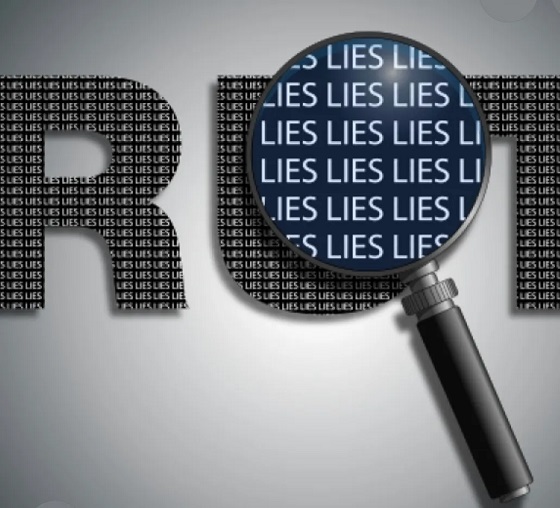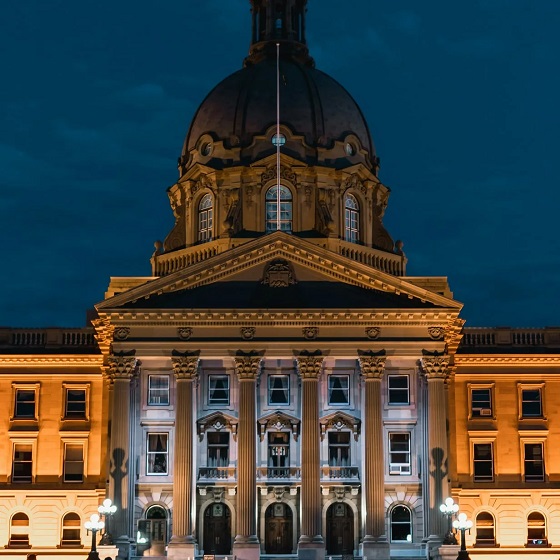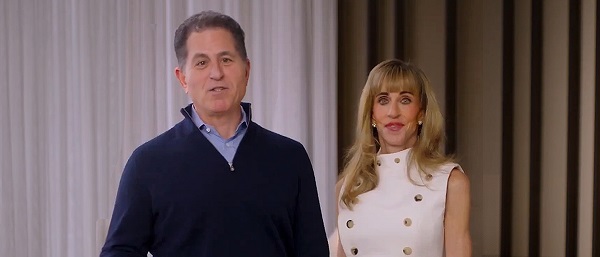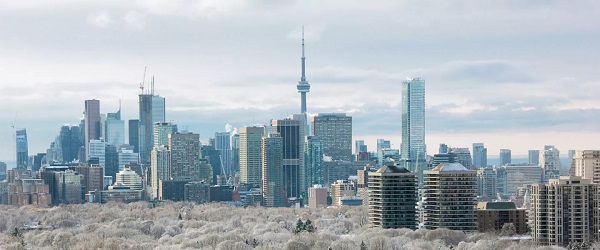COVID-19
Study showing ‘high likelihood’ of link between COVID vaccines and death republished in peer-reviewed journal

From LifeSiteNews
By Dr. Suzanne Burdick, The Defender
The largest COVID-19 vaccine autopsy study to date has been republished in a peer-reviewed journal after twice being censored. The study’s lead author said it provides ‘robust evidence’ that the vaccines can cause death, meeting the FDA’s criteria for ‘an immediate market withdrawal.’
The largest COVID-19 vaccine autopsy study to date has been republished in a peer-reviewed journal — after twice being censored, according to Nicolas Hulscher, the paper’s lead author and an epidemiologist at the McCullough Foundation.
Science, Public Health Policy and the Law on Nov. 17 published the study, which had been previously withdrawn from Preprints with The Lancet and Forensic Science International.
Hulscher told The Defender the study’s republication signals a “pivotal victory for transparency and accountability in science.” It also marks “a significant setback” for actors in the biopharmaceutical complex and “their Academic Publishing Cartel,” Hulscher said.
Hulscher’s co-authors include Dr. Harvey Risch, Dr. Peter A. McCullough and Dr. William Makis.
Hulscher told The Defender the study provides “robust evidence that COVID-19 vaccines can cause death. This means that the FDA’s [U.S. Food and Drug Administration] criteria for a Class I recall have been fulfilled, warranting an immediate market withdrawal.”
The FDA defines a Class I product recall as “a situation in which there is a reasonable probability that the use of or exposure to a violative product will cause serious adverse health consequences or death.”
Risch, professor emeritus of epidemiology at the Yale School of Public Health, told The Defender that the COVID-19 vaccine spike protein “can stay around in some people and continue to do inflammatory damage in any site where it gets to through the bloodstream.”
In ‘striking act of censorship’ publishers withdraw study, shut down debate
The study’s publication in Science, Public Health Policy and the Law is the latest twist in an ongoing saga as the authors have tried to get their research out to the public and scientific community, Hulscher wrote on Substack.
The study results were first made public on July 5, 2023, as a preprint with The Lancet on SSRN, an open-access research platform.
However, Preprints with The Lancet removed the study from the server within 24 hours, posting a statement that the study’s conclusions were “not supported by the study methodology,” The Daily Sceptic reported.
McCullough told The Epoch Times that the study was experiencing “hundreds of reviews per minute” before its removal.
Preprint servers offer a place for the public to view scientific reports and papers while they undergo peer review, making scientific findings available immediately and for free and opening them up to broader public debate.
The authors subsequently posted on the Zenodo preprint server, while the review underwent peer review at Forensic Science International. It was downloaded over 130,000 times.
On June 21, 2024, after successful peer review, Forensic Science International published the study.
Within weeks, the study became the top trending research paper worldwide across all subject areas, according to the Observatory of International Research, Hulscher recalled.

“Unfortunately,” Hulscher wrote on Substack, “in a striking act of censorship, Elsevier and Forensic Science International withdrew the article on August 2nd, 2024 in flagrant violation of their own withdrawal policy and COPE guidelines.”
He said they “left no traces behind, completely wiping our paper from the webpage.”
Elsevier and Forensic Science International said that “members of the scientific community” — who remained anonymous, Hulscher pointed out — cited numerous concerns about the study, including inappropriate citation references, inappropriate methodological design and a lack of factual support for its conclusions.
READ: Slovak COVID commissioner calls pandemic a ‘fabricated operation,’ calls for end to vaccines
The concerns were “unfounded,” Hulscher wrote. The study authors wrote a rebuttal defending their study and submitted a revised manuscript. However, Elsevier and Forensic Science International rejected the revised manuscript.
Hulscher noted that Elsevier and Forensic Science International “failed to follow the proper scientific discourse method of allowing debate in Letters to the Editor.” Instead, they shut down the possibility of debate by censoring the study.
“This type of academic censorship poses a serious threat to the progress of scientific discovery,” he said.
73.9% of deaths reviewed by authors linked to COVID vaccines
As The Defender previously reported, the study authors did a systematic review of studies on autopsy findings following COVID-19 vaccination.
They first searched PubMed and ScienceDirect for all published autopsy and necropsy — another word for autopsy — reports related to COVID-19 vaccination in which the death occurred after vaccination.
They screened out 562 duplicate studies among the 678 studies initially identified in their search. Other papers were removed because they lacked information about vaccination status.
Ultimately, they evaluated 44 papers containing 325 autopsies and one necropsy case. Three physicians independently reviewed each case and adjudicated whether or not the COVID-19 shot was the direct cause or contributed significantly to the death reported.
They found 240 of the deaths (73.9%) were found to be “directly due to or significantly contributed to by COVID-19 vaccination.” The mean age for death was 70.4 years old.
Primary causes of death included sudden cardiac death, which happened in 35% of cases, pulmonary embolism and myocardial infarction, which occurred in 12.5% and 12% of the cases respectively.
Other causes included vaccine-induced immune thrombotic thrombocytopenia, myocarditis,multisystem inflammatory syndrome and cerebral hemorrhage.
Most deaths occurred within a week of the last shot.
The authors concluded that because the deaths were highly consistent with the known mechanisms for COVID-19 vaccine injury, it was highly likely the deaths were causally linked to the vaccine.
They said the findings “amplify” existing concerns about the vaccines, including those related to vaccine-induced myocarditis and myocardial infarction and the effects of the spike protein more broadly.
They also said the studies have implications for unanticipated deaths among vaccinated people with no previous illness. “We can infer that in such cases, death may have been caused by COVID-19 vaccination,” they wrote.
READ: Peer-reviewed study finds over 1,000% rise in cardiac deaths after COVID-19 shots
The authors acknowledged some potential biases in the article.
First, they said, their conclusions from the autopsy findings are based on an evolving understanding of the vaccines, which are currently different from when the studies evaluated were published.
They also noted that systematic reviews have bias potential in general because of biases that may exist at the level of the individual papers and their acceptance into the peer-reviewed literature.
They said publication bias could have affected their results because the global push for mass vaccination has made investigators hesitant to report adverse events.
They also said their research did not account for confounding variables like concomitant illnesses, drug interactions and other factors that may have had a causal role in the reported deaths.
This article was originally published by The Defender – Children’s Health Defense’s News & Views Website under Creative Commons license CC BY-NC-ND 4.0. Please consider subscribing to The Defender or donating to Children’s Health Defense.
COVID-19
Canadian Health Department funds study to determine effects of COVID lockdowns on children

From LifeSiteNews
The commissioned study will assess the impact on kids’ mental well-being of COVID lockdowns and ‘remote’ school classes that banned outdoor play and in-person learning.
Canada’s Department of Health has commissioned research to study the impact of outdoor play on kids’ mental well-being in light of COVID lockdowns and “remote” school classes that, for a time, banned outdoor play and in-person learning throughout most of the nation.
In a notice to consultants titled “Systematic Literature Reviews And Meta Analyses Supporting Two Projects On Children’s Health And Covid-19,” the Department of Health admitted that “Exposure to green space has been consistently associated with protective effects on children’s physical and mental health.”
A final report, which is due in 2026, will provide “Health Canada with a comprehensive assessment of current evidence, identify key knowledge gaps and inform surveillance and policy planning for future pandemics and other public health emergencies.”
Bruce Squires, president of McMaster Children’s Hospital of Hamilton, Ontario, noted in 2022 that “Canada’s children and youth have borne the brunt” of COVID lockdowns.
From about March 2020 to mid-2022, most of Canada was under various COVID-19 mandates and lockdowns, including mask mandates, at the local, provincial, and federal levels. Schools were shut down, parks were closed, and most kids’ sports were cancelled.
Mandatory facemask polices were common in Canada and all over the world for years during the COVID crisis despite over 170 studies showing they were not effective in stopping the spread of COVID and were, in fact, harmful, especially to children.
In October 2021, then-Prime Minister Justin Trudeau announced unprecedented COVID-19 jab mandates for all federal workers and those in the transportation sector, saying the un-jabbed would no longer be able to travel by air, boat, or train, both domestically and internationally.
As reported by LifeSiteNews, a new report released by the Justice Centre for Constitutional Freedoms (JCCF) raised alarm bells over the “harms caused” by COVID-19 lockdowns and injections imposed by various levels of government as well as a rise in unexplained deaths and bloated COVID-19 death statistics.
Indeed, a recent study showed that COVID masking policies left children less able to differentiate people’s emotions behind facial expressions.
COVID vaccine mandates and lockdowns, which came from provincial governments with the support of the federal government, split Canadian society.
COVID-19
Ontario student appeals ruling that dismissed religious objection to abortion-tainted COVID shot

From LifeSiteNews
An Ontario Tech University student is seeking judicial review after the Human Rights Tribunal of Ontario ruled his beliefs did not qualify as protected ‘creed.’
An Ontario university student who was punished for refusing the COVID shot is contesting a tribunal ruling that rejected his religious objection to the vaccine.
In a November 28 press release, the Justice Centre for Constitutional Freedoms (JCCF) announced that a judicial review has been filed on behalf of former Ontario Tech University student Philip Anisimov after his religious objection to the COVID vaccine was dismissed by an Ontario court.
“Mr. Anisimov’s objection to the Covid vaccine was deeply rooted in his religious commitment to live according to biblical precepts,” Constitutional lawyer Hatim Kheir declared. “He hopes the Divisional Court will clarify that his religious objection was protected by the Human Rights Code and entitled to protection.”
In 2021, Ontario mandated that all students in the province show proof of vaccination unless they had an exemption or agreed to attend a COVID jab education session boasting about the shots. The third option was not available at Ontario Tech University, as schools could choose whether or not they would offer such a program to students.
Anisimov had requested an exemption from the experimental, abortion-tainted COVID shots on religious grounds but was denied and deregistered from his courses.
He was then forced to spend an entire extra year to complete his studies. According to his lawyers, Ontario Tech University’s decision to not approve his COVID jab exemption request “not only disrupted his career plans but also violated his right to be free from discrimination on the basis of religion, as protected by the Ontario Human Rights Code.”
The university’s refusal to honor his exemption prompted Anisimov to take legal action in April with help of the JCCF. However, the Human Rights Tribunal of Ontario rejected his religious objection, arguing that it was not protected as a “creed” under the Ontario Human Rights Code.
Now, Anisimov is appealing the ruling, hoping that his case will serve as a precedent for justice for students who were discriminated against for refusing the abortion-tainted vaccine.
“My hope is that this case helps set an important precedent and encourages Canadians to reflect on the direction our society is taking,” he explained. “My trust is that God does all things for the good of those who love Him, who are called by His purposes.”
COVID vaccine mandates, as well as lockdowns that came from provincial governments with the support of the federal government, split Canadian society. The mRNA shots have been linked to a multitude of negative and often severe side effects in children.
Beyond health concerns, many Canadians, especially Catholics, opposed the vaccines on moral grounds because of their link to fetal cell lines derived from the tissue of aborted babies.
-

 Focal Points2 days ago
Focal Points2 days agoPharma Bombshell: President Trump Orders Complete Childhood Vaccine Schedule Review
-

 Business21 hours ago
Business21 hours agoWhy Does Canada “Lead” the World in Funding Racist Indoctrination?
-

 Alberta2 days ago
Alberta2 days agoA Memorandum of Understanding that no Canadian can understand
-

 Automotive1 day ago
Automotive1 day agoTrump Deals Biden’s EV Dreams A Death Blow
-

 Censorship Industrial Complex2 days ago
Censorship Industrial Complex2 days agoFrances Widdowson’s Arrest Should Alarm Every Canadian
-

 Alberta2 days ago
Alberta2 days agoPremier Smith: Canadians support agreement between Alberta and Ottawa and the major economic opportunities it could unlock for the benefit of all
-

 Automotive1 day ago
Automotive1 day agoCanada’s EV Mandate Is Running On Empty
-

 Media21 hours ago
Media21 hours agoThey know they are lying, we know they are lying and they know we know but the lies continue









